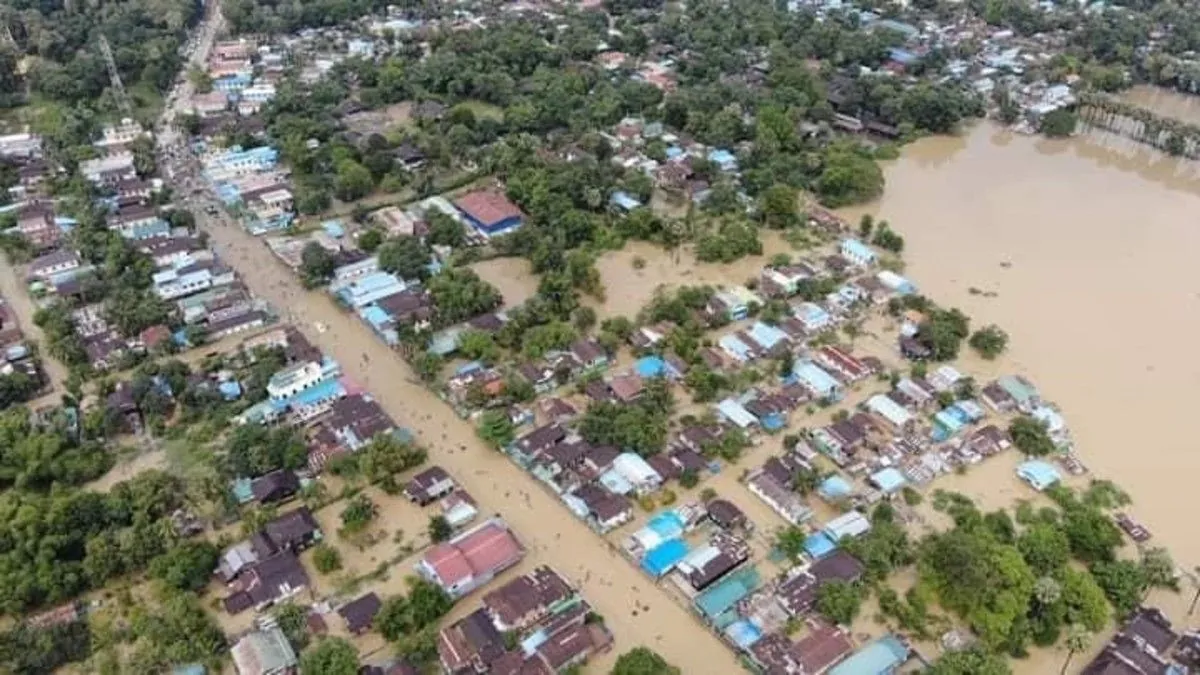In a devastating turn of events, Myanmar, the largest country in mainland Southeast Asia, is grappling with the aftermath of severe flooding caused by Typhoon Yagi. The death toll has risen to 226, with numerous individuals still unaccounted for due to landslides and entire villages being swept away by raging rivers.
The United Nations has issued a stark warning, estimating that up to 630,000 people may require assistance. This disaster has struck a nation already facing significant challenges, as Myanmar has been under various forms of military rule for most of its independent history since gaining freedom from British rule in 1948.
State television reports indicate that nearly 640,000 acres of rice paddies and other crops have been destroyed, exacerbating food insecurity in a country where the economy is one of the least developed in Southeast Asia. The destruction of crops is particularly concerning given that Myanmar's climate is tropical monsoon, with three distinct seasons, making agriculture a crucial sector.
Myanmar's military junta, which seized power in a February 2021 coup, has taken the unusual step of appealing for foreign aid to address the rescue mission and flood aftermath. This request comes despite previous reluctance to accept international humanitarian assistance, including the suspension of travel authorizations for aid groups following Cyclone Mocha last year.
The impact of the flooding has been severe, with state media reporting the destruction of nearly 66,000 houses, 375 schools, and a monastery as of Friday evening. Critical infrastructure has also been affected, including a railway bridge in Mandalay's Pyawbwe township and the Yangon-Mandalay highway in the capital Naypyidaw, which were either swept away or severely flooded.
Communication challenges have further complicated rescue efforts, with phone and internet services cut off in parts of the country. This has led to fears that the actual extent of the damage and loss of life may be significantly higher than currently reported.
The World Food Programme has described these floods as the worst in Myanmar's recent history. This assessment takes into account previous severe flooding events in 2011 and 2015, which each resulted in over 100 deaths. The current disaster also evokes memories of Cyclone Nargis in 2008, which left more than 138,000 people dead or missing.
The areas most affected by the storm include Naypyidaw, the Mandalay, Magway, and Bago regions, as well as eastern and southern Shan state, Mon, Kayah, and Kayin states. These regions encompass diverse landscapes and ethnic groups, as Myanmar is home to over 100 ethnic groups, with the Bamar being the largest.
Local media reports suggest that many of the most severely affected villages have been forced to carry out and fund their own rescue operations. Eyewitness accounts describe people trapped on top of their flooded homes or in trees, highlighting the desperate situation faced by many residents.
"We had no time to move our belongings as water level rose rapidly and had to climb on the roof. The floodwaters are very strong, and they were higher than a man."
The international community has begun to respond to the crisis, with India sending 10 tonnes of materials, including dry rations, clothing, and medicine. However, the UN has issued an urgent appeal for more resources, emphasizing the scale of the disaster.
This catastrophic event has reignited concerns about the impact of climate change on extreme weather patterns. As Myanmar is rich in natural resources, including oil, gas, and precious stones, balancing economic development with environmental protection becomes increasingly crucial in the face of such disasters.
As the country struggles to cope with this latest calamity, the resilience of its people is being tested once again. The flooding serves as a stark reminder of Myanmar's vulnerability to natural disasters and the ongoing challenges faced by its population of about 54 million people as of 2024.
